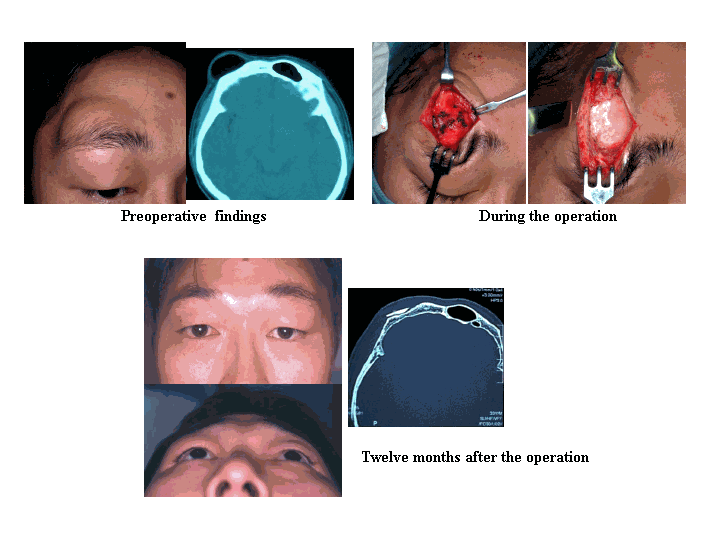Wednesday, October 29, 2003
3389
P36: Correction of Bone Deformity after Resection of Dermoid Cyst using Calcium Phosphate Cement (CPC)
Dermoid cyst is located in the subcutaneous tissue and often adheres to the periosteum. When the tumor remains without surgical removal, it may invade or erode the underlying bone, resulting in bone deformity. This deformity usually disappears after tumor resection, but in some cases the deformity remains even after the resection, resulting in a conspicuous depressed deformity. In these cases, repair of the deformity must be considered after resecting the lesion. The lesion is often located in the supralateral orbital region, which features a smooth curvature. It is not easy to represent a smooth and symmetrical surface. We treated bone deformity in the patients of the dermoid cyst with calcium phosphate cement injection. After resecting the tumor, calcium phosphate cement (BiopexTM, Mitsubishi Material corporation, Tokyo, Japan) was injected onto the depressed site in order to create a symmetrical surface with the contralateral side. Ten minutes after injection, the skin has temporarily sutured, and the degree of augmentation is evaluated. If it is insufficient, additional cement is employed. A mild pressure dressing is applied for seven days, and after which no fixation is required. Five dermoid cyst patients with bone deformity were treated with calcium phosphate cement. In all patients, the tumor was located in the supralateral orbital region, attached with or buried into the underlying bone, resulting in bone deformity. Patient age ranged from 14 months to 33 years. The follow-up period ranged from six months to twelve months. The amount of injected calcium phosphate cement was ranged from 0.5cc to 1.5cc. No patient showed an allergic or infectious reaction during the postoperative follow-up period. No patient showed significant postoperative absorption or mobilization of implanted calcium phosphate cement was found. The implanted region was smooth and almost symmetrical. All patients and their families were satisfied with the results. We believe that CPC is a useful option as an implantation material to correct underlying bone deformity in patient with dermoid cysts.
View Synopsis (.doc format, 1234.0 kb)
See more of Posters
Back to Plastic Surgery 2003 Complete Scientific Program
Back to Plastic Surgery 2003 Meeting home

